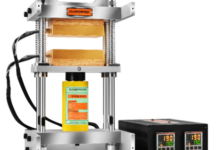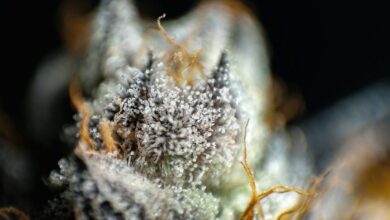What Is the Difference Between Broad Spectrum and Full Spectrum Cbd

The distinction between broad spectrum and full spectrum CBD is primarily based on their cannabinoid profiles. Full spectrum CBD contains a wide array of cannabinoids, including THC, which may contribute to its therapeutic effects. Conversely, broad spectrum CBD retains various cannabinoids but excludes THC entirely. This difference influences their use and appeal to consumers. Understanding these nuances is essential for anyone considering which type may best suit their health needs and preferences.
Understanding Full Spectrum CBD
Although the term "full spectrum CBD" is often used interchangeably with other types of cannabidiol products, it specifically refers to a formulation that contains a wide range of cannabinoids, terpenes, and other beneficial compounds derived from the cannabis plant.
These elements work synergistically, offering full spectrum benefits and enhancing full spectrum effects, which may contribute to improved wellness and overall balance for those seeking natural alternatives.
Exploring Broad Spectrum CBD
Broad spectrum CBD represents a distinct category within the range of cannabidiol products, differing significantly from full spectrum formulations.
It retains various cannabinoids and terpenes, excluding THC, which may provide broad spectrum benefits such as anxiety relief and improved sleep.
Different extraction methods, including CO2 and ethanol, are employed to produce these formulations, ensuring a range of beneficial compounds while maintaining a THC-free profile.
Key Differences Between Full Spectrum and Broad Spectrum CBD
The distinction between full spectrum and broad spectrum CBD lies primarily in their cannabinoid profiles.
Full spectrum contains a complete range of cannabinoids, including THC, contributing to its unique chemical composition and synergistic therapeutic effects.
In contrast, broad spectrum eliminates THC, retaining other cannabinoids that may still provide health benefits.
Thus, users may choose based on preferred chemical compositions and desired therapeutic outcomes.
Choosing the Right CBD for Your Needs
Selecting the appropriate type of CBD requires careful consideration of individual needs and preferences.
Users should evaluate dosage guidelines to determine optimal amounts for their specific conditions.
Additionally, understanding extraction methods is crucial, as these techniques affect cannabinoid content and purity.
Conclusion
In the realm of CBD, the choice between broad spectrum and full spectrum products presents a pivotal decision for consumers. Each offers distinct benefits, yet the implications of their cannabinoid profiles can significantly influence individual experiences. As one weighs the therapeutic potential against personal preferences and sensitivities, the question lingers: which spectrum will ultimately unlock the desired health benefits? The answer remains tantalizingly elusive, inviting exploration and deeper understanding in the pursuit of well-being.






